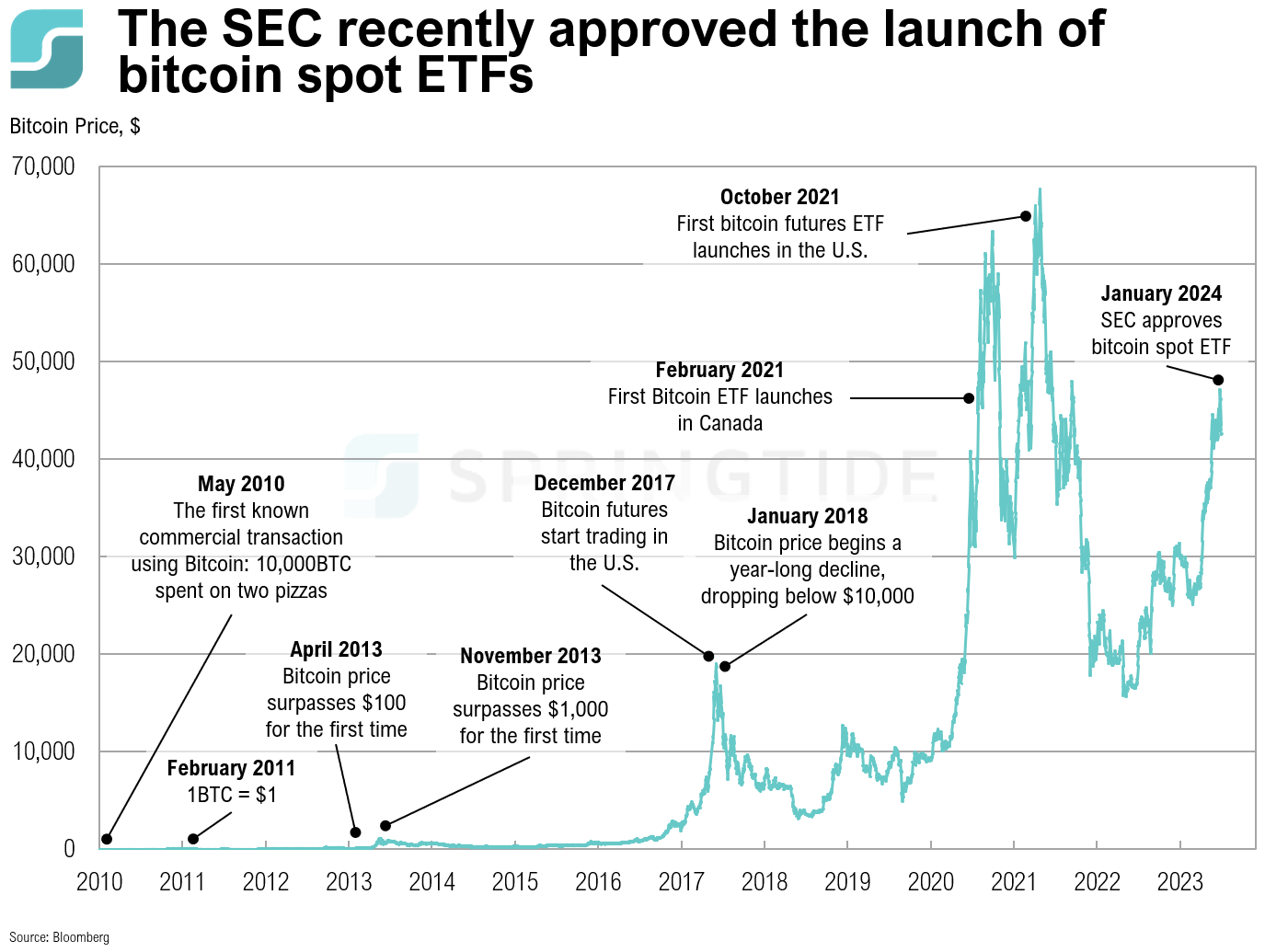SUMMARY
- Bitcoin, the first and most well-known cryptocurrency, has a rich and complex history. Bitcoin was created by an individual or group using the pseudonym Satoshi Nakamoto. The concept was introduced in a 2008 white paper titled “Bitcoin: A Peer-to-Peer Electronic Cash System.” For the first few years, bitcoin was primarily a niche interest for cryptography enthusiasts, with little to no monetary value.
- Bitcoin’s value skyrocketed in late 2017, reaching nearly $20,000 before falling sharply. This period was marked by a surge in public interest, with widespread media coverage and increasing investment from both retail and institutional investors. The COVID-19 pandemic initially caused a sharp decline in bitcoin’s price. However, it quickly rebounded and reached new highs, driven partly by institutional investment and the perception of bitcoin as a ‘digital gold’ and a hedge against inflation.
- The most recent phase in bitcoin’s history includes significant regulatory developments. In particular, the U.S. Securities and Exchange Commission’s (SEC) approval of bitcoin spot Exchange-Traded Funds (ETFs) on January 10 marks a major milestone. This approval is seen as a sign of growing mainstream and institutional acceptance of bitcoin.
- While bitcoin initially declined following the SEC approval, what the longer-term impact on the historically volatile cryptocurrency’s price will be remains to be seen.
DISCLOSURES
The material shown is for informational purposes only. Any opinions expressed are current only as of the time made and are subject to change without notice. This report may include estimates, projections or other forward-looking statements; however, forward-looking statements are subject to numerous assumptions, risks, and uncertainties, and actual results may differ materially from those anticipated in forward-looking statements. As a practical matter, no entity is able to accurately and consistently predict future market activities. Additionally, please be aware that past performance is not a guide to the future performance of any investment, and that the performance results and historical information provided displayed herein may have been adversely or favorably impacted by events and economic conditions that will not prevail in the future. Therefore, it should not be inferred that these results are indicative of the future performance of any strategy, index, fund, manager or group of managers. The graphs and tables making up this report have been based on unaudited, third-party data and performance information provided to us by one or more commercial databases. While we believe this information to be reliable, SpringTide Partners bears no responsibility whatsoever for any errors or omissions.
Index benchmarks contained in this report are provided so that performance can be compared with the performance of well-known and widely recognized indices. Index results assume the re-investment of all dividends and interest. The information provided is not intended to be, and should not be construed as, investment, legal or tax advice. Nothing contained herein should be construed as a recommendation or advice to purchase or sell any security, investment, or portfolio allocation. This presentation is not meant as a general guide to investing, or as a source of any specific investment recommendations, and makes no implied or express recommendations concerning the manner in which any client’s accounts should or would be handled, as appropriate investment decisions depend upon the client’s specific investment objectives.
SpringTide Partners, LLC is a registered investment adviser with the Securities and Exchange Commission; registration does not imply a certain level of skill or training. For more detail, including information about SpringTide’s business practices and conflicts identified, please refer to SpringTide Partners’ Form ADV Part 2a and Form CRS at: https://www.springtide-partners.com/disclosures


